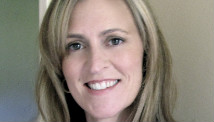If Urooj Khan's remains are exhumed in coming days as expected, authorities will attempt to retrace the devastating course of one molecule through his body.
Cyanide, a toxic combination of carbon and nitrogen, exists throughout nature in trace amounts in certain plants, seeds and soils. It is also produced by some bacteria and fungi.
In its pure solid or gas forms, however, cyanide can be acutely poisonous, earning it an ignoble reputation in human history as an efficient killer — from World War II Nazi death camps to the Jonestown massacre to the Chicago Tylenol murders.
"It is a poison we fear," said Frank Paloucek, a pharmacist and toxicologist at the University of Illinois at Chicago. "It is a really dangerous poison, and once you get enough of it, there is not much we can do."
That appears to be the case for Khan, a West Rogers Park businessman who died of cyanide poisoning in July just weeks after winning a million-dollar lottery jackpot. The Cook County medical examiner's office initially found that Khan died of natural causes, and he was buried in Rosehill Cemetery. But after a relative voiced concern, extensive toxicological tests showed he died of lethal levels of cyanide. Chicago police and Cook County prosecutors are investigating his death as a homicide.
The murder mystery, first revealed in the Tribune on Monday, has sparked worldwide interest. It comes more than 30 years after the murders of seven Chicago-area residents who ingested cyanide-spiked Tylenol capsules spread fear across the country. The FBI reopened its investigation into the killings four years ago, but no one has ever been charged.
"In the rare event of homicidal poisoning, cyanide is not an uncommon (substance) to use," Dr. Gregory Schmunk, a forensic pathologist and president of the National Association of Medical Examiners, said Thursday.
Indeed, just last year, the wife of a former Communist Party leader in China was accused of killing a British businessman after ordering her butler to spike his drink with cyanide.
It is, however, more commonly seen in suicides, such as in the case of an Arizona businessman who poisoned himself in a courtroom with cyanide last year after he was found guilty of arson, according to experts.
The compound kills quickly.
Once inside the human body, it prevents cells from using oxygen. If enough cells absorb cyanide, a person's body and brain will become so oxygen-deprived that their tissues will begin to die.
As the body fights to provide more oxygen, heart and breathing rates rise. Cramping and headaches can occur, followed by loss of consciousness and eventually death.
Death may come in anywhere from 15 minutes to a couple of hours, Paloucek said.
Cyanide is typically detected during a medical examination by a scarlet red discoloration or a "bitter almond" odor emitting from the body, according to experts. But neither is a sure measure — darker pigmentation can mask red skin coloration, and many people can't smell cyanide.
In its powder form, a toxic dose of cyanide may only be about 200 milligrams, roughly the amount of any common pain medication pill, according to Paloucek.
"We are dealing with a poison that has a very fast knockdown rate," said John H. Trestrail III, a clinical and forensic toxicologist who consults with law enforcement agencies on such cases.
For that reason, investigators have been looking closely at the events that happened around the time that Khan died, including the last meal he ate, which his wife acknowledged preparing.
Cyanide can come as a gas or in a solid powder that looks like white sugar. It is commonly used in research laboratories, in mining to extract certain metals and by jewelers. It also used to be widely used in the United States to kill various pests.
"One hundred years ago, you could go into a pharmacy and buy cyanide to kill wasps," Trestrail said. "But you don't do that anymore."
Now cyanide suppliers maintain a "poison register" that would include information like proof of purchase, the name of the buyer and its intended use, according to Trestrail.
Outside the United States, however, cyanide is readily available, according to Paloucek. And even within the U.S., there have been cases of people giving false information to cyanide suppliers to obtain the substance.
"If you're persistent, it is not hard to get your hands on it," Schmunk said.
Local authorities plan to ask a Cook County Circuit Court judge on Friday for permission to exhume Khan's body in the next week or two. The remains would be autopsied by the medical examiner's office, according to its spokeswoman, Mary Paleologos.
Investigators will take samples of Khan's stomach contents to see if and how the cyanide was ingested, Paleologos said. They will also take more fluid and blood samples and look at other organs such as the lungs, to see if it may have been inhaled, she said. Investigators will also try to rule out chronic cyanide poisoning in which long-term exposure to the compound may have contributed to his death.
"A lot depends on if the body is in good or poor condition," Paleologos said. "If it's in good condition, of course (the medical examiner) can get decent samples, but if it's in poor condition, the quality of the samples will be poor as well."
cdizikes@tribune.com
asweeney@tribune.com

